
-
Find the right food for your petTake this quiz to see which food may be the best for your furry friend.Find the right food for your petTake this quiz to see which food may be the best for your furry friend.Health CategoryFeatured products
 Adult Small Bites Chicken & Barley Recipe Dog Food
Adult Small Bites Chicken & Barley Recipe Dog FoodSupports lean muscle for dogs who prefer smaller kibble
Shop Now Adult Oral Care Small & Mini Chicken, Rice & Barley Recipe Dog Food
Adult Oral Care Small & Mini Chicken, Rice & Barley Recipe Dog FoodClinically proven kibble technology to reduce plaque & tartar build-up, specially designed for small & mini dogs
Shop Now Adult 7+ Small Bites Chicken Meal, Barley & Rice Recipe Dog Food
Adult 7+ Small Bites Chicken Meal, Barley & Rice Recipe Dog FoodSupports energy level and beautiful coat in mature dogs who prefer smaller kibble
Shop NowFeatured products Adult 7+ Tender Tuna Dinner Cat Food
Adult 7+ Tender Tuna Dinner Cat FoodWith delicious chunks in a decadent gravy
Shop Now Sensitive Stomach & Skin Chicken & Beef Dinner
Sensitive Stomach & Skin Chicken & Beef DinnerGourmet daily nutrition, carefully made. Tasty chunks with chicken & beef in a decadent gravy. Supports digestive health, nourishes skin and promotes a lustrous fur.
Shop Now Adult Chicken & Spinach Casserole Cat Food
Adult Chicken & Spinach Casserole Cat FoodWith delicious chunks in a decadent gravy
Shop Now -
DogCat
- Cat Tips & Articles
-
Health Category
- Weight
- Skin & Food Sensitivities
- Urinary
- Digestive
- Kidney
- Dental
- Serious Illness
-
Life Stage
- Kitten Nutrition
- Adult Nutrition
Featured articlesHill's Australian Bushfire EffortsRead More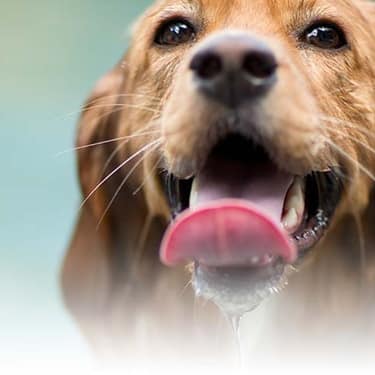 Water
WaterWater is the most important nutrient of all and essential for life. Animals can lose almost all their fat and half their protein and still survive, but if they lose 15% of their water, it will mean death.
Read More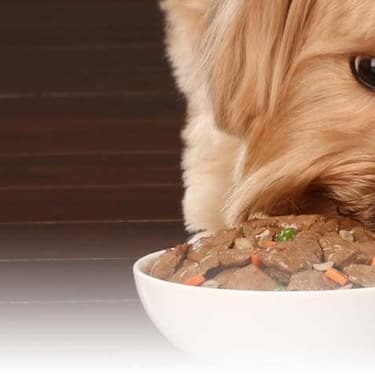 Pet Food Storage Tips
Pet Food Storage TipsWhere you store your cat and dog food can make a big difference in the quality and freshness once it is opened. Here are some common questions and recommendations for optimal storage for all of Hill’s dry and canned cat and dog food.
Read More -


Whether out at the park or right in your living room, live and in-person or animated and on TV, the odds of you seeing a dog chasing their tail are pretty good. Sometimes it's a few enthusiastic loops in response to a seemingly exciting event; other times, it can look more like an endless cyclone of tail chasing, as the dog chases their tail over and over until they find a new distraction.
As a dog parent, you probably have some questions about this peculiar dog chasing tail behaviour, most specifically: why is your dog chasing their tail? Is it because they're bored, burning off extra energy, or is it for fun? Can dogs make themselves dizzy from chasing their tail?
Well, wonder no longer! We're diving into four common reasons why your dog may be so fascinated with their tail.
1. Boredom
The first possible answer to your question around why does my dog chase his tail may actually be due to boredom. More likely than not, they may be lacking mental stimulation, looking for attention, or simply trying to burn excess energy. That's the case for lots of dogs — especially younger dogs and puppies. Often, these dogs find that running in circles is great fun!
For puppies who might not recognise their tail as part of their body yet, it can even be a source of fun. They see a fuzzy object in their periphery and assume it is another animal worth chasing. Running in circles doesn't appear to make dogs dizzy in the same way as humans, says Wag!, so they can keep going for quite a while.
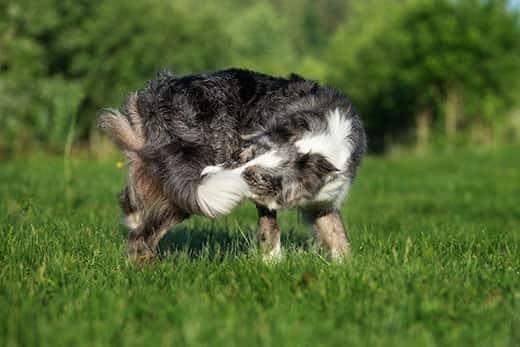
2. A Medical Condition
If your dog chases their tail on occasion, that's totally normal. However, if this behaviour is constant, it could signal a more serious issue. According to Vet West Animal Hospital, “There are some neurological conditions that can cause a dog to whirl or chase his or her tail. Whilst rare, severe tail chasing has been attributed to epilepsy and is sometimes described as a seizure-related symptom.” There may by another underlying issue such as cancer in extreme circumstances or, your dog may be experiencing pain in that area if. For example, they have had their tail docked. It is always important to visit your vet to understand why your do is chasing his tail.
Some experts believe that tail chasing may even signal mental illness in dogs as Fitzroy Vet Hospital states that “for some dogs the behaviour becomes so obsessive that it causes them injury or exhaustion” and whilst it is “not usually life-threatening, it can have a great impact on the day-to-day life of both you and your dog.”
If left unchecked, this behaviour can become self-destructive, resulting in dogs damaging their tails. If you believe your dog is obsessively chasing their tail, consult your vet.


Tasty Tips
3. Genetics
According to research published by the Journal of Small Animal Practice, there may be a connection between compulsive tail chasing and high blood and cholesterol levels. Researchers found that the 15 tail-chasing dogs they observed had significantly higher levels of total cholesterol and both high- and low-density lipoprotein cholesterol than the control dogs. More research needs to be conducted on the genetic link, but this was an interesting finding, nevertheless.
Keep in mind, there's a vast range of reasons why your dog is chasing their tail. If you two are getting outside for plenty of exercise and playtime together, but you still notice this behaviour, you may want to keep an eye on it. If you observe your dog chasing their tail in obsessive, nonstop ways, you may want to hop over to the vet just to ensure there's nothing wrong.
4. Parasites
A dog that has an itchy tail from parasites such as fleas or ticks might be more likely to "chase" their tail in an effort chew on the itchy spot to try and relieve themselves. While, dogs are more likely to sit down and try to contort their body in a way to reach the itchy spot, they may try chasing their tail at first. If you notice your dog trying to chew on their tail, you'll want to check for any signs of parasites and contact your vet about getting it looked at by an expert.
Is Tail Chasing More Common in Certain Breeds?
There is evidence to suggest that breeds such as German Shepherds, Bull Terriers and Anatolian sheepdogs are more likely to chase their tails. There is also indications that it is common in terrier breeds such as the West Highland White Terrier and Jack Russell Terriers, but there currently isn't enough statistical data to confirm.
Discouraging This Behaviour
While chasing their tail may seem harmless and can provide great entertainment for both you and your dog, it's also important to monitor this behaviour carefully. If not for the conditions listed above, there is the risk of them actually catching their tail — specifically in younger dogs that are not as "tail-aware." There are many small bones in a dog's tail that can be damaged or broken if injury occurs. Additionally, if your dog does see their tail as prey, they might be inclined to chomp at it, which could result in a bite on their own tail. So, if you notice that they are close to catching their tail, you might want to consider discouraging this behaviour to ensure they don't hurt themselves.


Erin Ollila believes in the power of words and how a message can inform—and even transform—its intended audience. Her writing can be found all over the internet and in print, and includes interviews, ghostwriting, blog posts, and creative nonfiction. Erin is a geek for SEO and all things social media. She graduated from Fairfield University with an M.F.A. in Creative Writing. Reach out to her on Twitter @ReinventingErin or learn more about her at http://erinollila.com.
Related products

Clinically proven kibble technology to reduce plaque & tartar build-up, specially designed for small & mini dogs

Supports energy level and beautiful coat in mature dogs who prefer smaller kibble

Supports healthy joints, lean muscle, and beautiful coat for large breed dogs

Supports lean muscle for dogs who prefer smaller kibble
Related articles
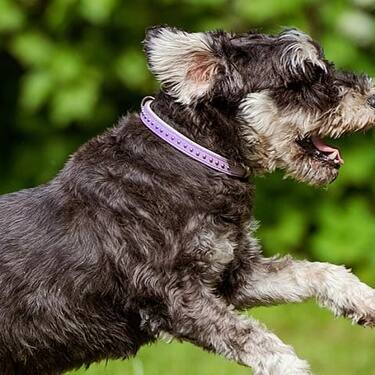
Extra pounds can cause problems for your dog's overall health. Learn the signs that your dog might be overweight, and what you can do to manage its weight.

Selecting the right food for your puppy is a key to quality nutrition and a long, healthy life., Learn more about how to select the right puppy food.

Learn how today's wet dog food blends have gotten a face lift, and how you'll provide your dog the nutrition he needs in the form he loves.
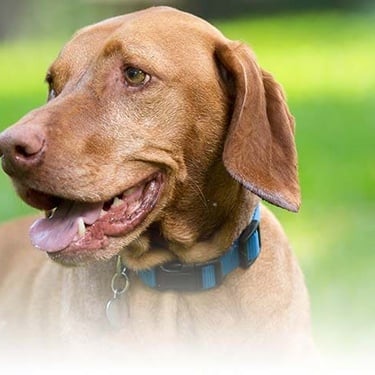
As small and toy breed dogs age, their nutritional needs change.
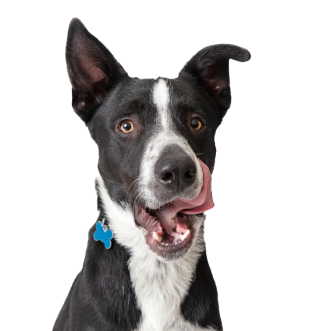
Put your dog on a diet without them knowing
Our low calorie formula helps you control your dog's weight. It's packed with high-quality protein for building lean muscles, and made with purposeful ingredients for a flavorful, nutritious meal. Clinically proven antioxidants, Vitamin C+E, help promote a healthy immune system.
Put your dog on a diet without them knowing
Our low calorie formula helps you control your dog's weight. It's packed with high-quality protein for building lean muscles, and made with purposeful ingredients for a flavorful, nutritious meal. Clinically proven antioxidants, Vitamin C+E, help promote a healthy immune system.

